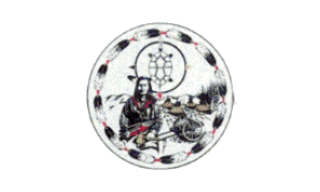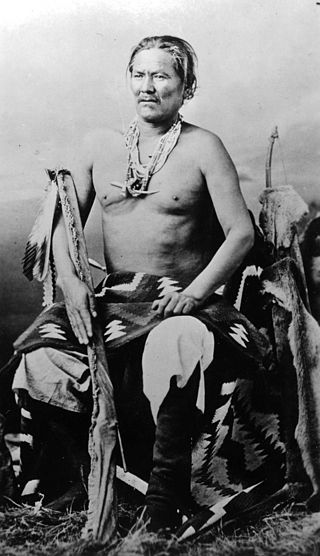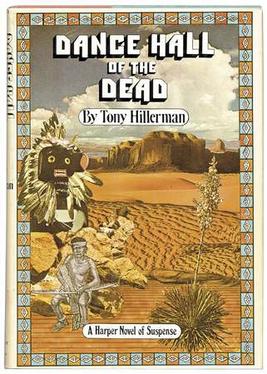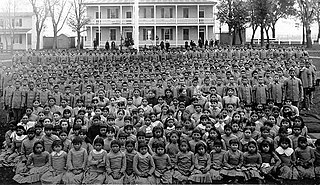
Native Americans, sometimes called American Indians, First Americans, or Indigenous Americans, are the Indigenous peoples of the United States or portions thereof, such as American Indians from the contiguous United States and Alaska Natives. The United States Census Bureau defines Native American as "all people indigenous to the United States and its territories, including Native Hawaiian and Other Pacific Islanders, whose data are published separately from American Indians and Alaska Natives". The U.S. census tracks data from American Indians and Alaska Native separately from Native Hawaiian and Other Pacific Islanders, who include Samoan Americans and Chamorros.

The Indian Reorganization Act (IRA) of June 18, 1934, or the Wheeler–Howard Act, was U.S. federal legislation that dealt with the status of American Indians in the United States. It was the centerpiece of what has been often called the "Indian New Deal". The major goal was to reverse the traditional goal of cultural assimilation of Native Americans into American society and to strengthen, encourage and perpetuate the tribes and their historic Native American cultures in the United States.

The Hopi are Native Americans who primarily live in northeastern Arizona. The majority are enrolled in the Hopi Tribe of Arizona and live on the Hopi Reservation in northeastern Arizona; however, some Hopi people are enrolled in the Colorado River Indian Tribes of the Colorado River Indian Reservation at the border of Arizona and California.

The Fixer is a novel by Bernard Malamud published in 1966 by Farrar, Straus & Giroux. It won the U.S. National Book Award for Fiction and the Pulitzer Prize for Fiction.

The Navajo Nation, also known as Navajoland, is a Native American reservation of Navajo people in the United States. It occupies portions of northeastern Arizona, northwestern New Mexico, and southeastern Utah. The seat of government is located in Window Rock, Arizona.
The Penobscot are an Indigenous people in North America from the Northeastern Woodlands region. They are organized as a federally recognized tribe in Maine and as a First Nations band government in the Atlantic provinces and Quebec.

An American Indian reservation is an area of land held and governed by a U.S. federal government-recognized Native American tribal nation, whose government is sovereign, subject to regulations passed by the United States Congress and administered by the United States Bureau of Indian Affairs, and not to the U.S. state government in which it is located. Some of the country's 574 federally recognized tribes govern more than one of the 326 Indian reservations in the United States, while some share reservations, and others have no reservation at all. Historical piecemeal land allocations under the Dawes Act facilitated sales to non–Native Americans, resulting in some reservations becoming severely fragmented, with pieces of tribal and privately held land being treated as separate enclaves. This jumble of private and public real estate creates significant administrative, political, and legal difficulties.

The Turtle Mountain Band of Chippewa Indians is a federally recognized Native American tribe of Ojibwe based on the Turtle Mountain Indian Reservation in Belcourt, North Dakota. The tribe has 30,000 enrolled members. A population of 5,815 reside on the main reservation and another 2,516 reside on off-reservation trust land.

Oliver Hazard Perry La Farge II was an American writer and anthropologist. In 1925 he explored early Olmec sites in Mexico, and later studied additional sites in Central America and the American Southwest. In addition to more than 15 scholarly works, mostly about Native Americans, he wrote several novels, including the Pulitzer Prize-winning Laughing Boy (1929). La Farge also wrote and published short stories, in magazines such as The New Yorker and Esquire.

The Navajo are a Native American people of the Southwestern United States.

A tribal chief, chieftain, or headman is the leader of a tribal society or chiefdom.

Dance Hall Of The Dead is a crime novel by American writer Tony Hillerman, the second in the Joe Leaphorn/Jim Chee Navajo Tribal Police series, first published in 1973. It features police Lieutenant Joe Leaphorn. It is set primarily in Ramah Reservation and the Zuni village in New Mexico, both in the American Southwest.

A series of efforts were made by the United States to assimilate Native Americans into mainstream European–American culture between the years of 1790 and 1920. George Washington and Henry Knox were first to propose, in the American context, the cultural assimilation of Native Americans. They formulated a policy to encourage the so-called "civilizing process". With increased waves of immigration from Europe, there was growing public support for education to encourage a standard set of cultural values and practices to be held in common by the majority of citizens. Education was viewed as the primary method in the acculturation process for minorities.

The Indian Child Welfare Act of 1978 is a United States federal law that governs jurisdiction over the removal of American Indian children from their families in custody, foster care and adoption cases.
Native American self-determination refers to the social movements, legislation and beliefs by which the Native American tribes in the United States exercise self-governance and decision-making on issues that affect their own people.

In the United States, tribal colleges and universities (TCUs) are a category of higher education, minority-serving institutions defined in the Higher Education Act of 1965. Each qualifies for funding under the Tribally Controlled Colleges and Universities Assistance Act of 1978 or the Navajo Community College Act ; or is cited in section 532 of the Equity in Educational Land-Grant Status Act of 1994.

Laughing Boy is a 1934 pre-Code film directed by W.S. Van Dyke and is based on the 1929 Pulitzer Prize-winning novel of the same name by Oliver La Farge.

Native American politics remain divided over different issues such as assimilation, education, healthcare, and economic factors that affect reservations. As a multitude of nations living within the United States, the Native American peoples face conflicting opinions within their tribes, essentially those living on federally approved reservations. Interactions with the federal government and the overall American culture surrounding them influence day-to-day tribal life. Native American culture as a whole rests between the divide of the traditionalists and those who wish to trade the old ways for improved conditions.
Native American literature is literature, both oral and written, produced by Native Americans in what is now the United States, from pre-Columbian times through to today. Famous authors include N. Scott Momaday, Leslie Marmon Silko, Simon Ortiz, Louise Erdrich, Gerald Vizenor, Joy Harjo, Sherman Alexie, D'Arcy McNickle, James Welch, Charles Eastman, Mourning Dove, Zitkala-Sa, John Rollin Ridge, Lynn Riggs, Hanay Geiogamah, William Apess, Samson Occom, Gerald Vizenor, Stephen Graham Jones, et al. Importantly, it is not "a" literature, but a set of literatures, since every tribe has its own cultural traditions. Since the 1960s, it has also become a significant field of literary studies, with academic journals, departments, and conferences devoted to the subject.

The literature of New England has had an enduring influence on American literature in general, with themes such as religion, race, the individual versus society, social repression, and nature, emblematic of the larger concerns of American letters.















